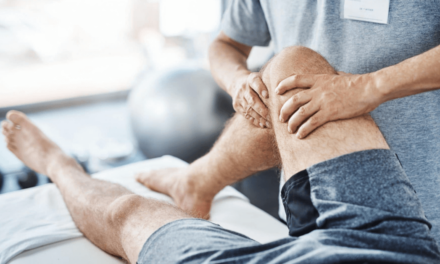A ruptured quadriceps tendon is a serious injury that can significantly affect your mobility, strength, and daily life. Whether caused by trauma, overuse, or degenerative conditions, this injury demands proper treatment and a well-planned recovery process. If you or someone you know has suffered from a quadriceps tendon rupture, you’re probably wondering: how long does it take to heal?
The truth is, the healing timeline for a ruptured quad tendon can vary depending on the severity of the injury, the treatment approach (surgical or non-surgical), and personal factors like age and fitness level. Let’s take a closer look at the recovery process and how long each phase typically takes.
The Stages of Healing from a Ruptured Quadriceps Tendon
1. Immediate Post-Injury Period (0-6 weeks)
The first stage of healing begins immediately after the injury, often requiring surgery if the tendon is fully ruptured. A partial rupture may not always require surgery, but it’s important to follow your doctor’s advice for proper care.
- Surgical repair: In the case of a full tear, surgery is usually needed to reattach the tendon to the kneecap. Following surgery, the knee is immobilized in a brace or cast, allowing the tendon to begin healing. Limited movement is crucial during this stage to protect the repair.
- Non-surgical approach: If the tendon tear is partial or surgery is not recommended, immobilization using a brace or cast is typically the treatment of choice. Your leg will be in a fixed position to promote healing.
The Stages of Healing from a Ruptured Quadriceps Tendon
1. Immediate Post-Injury Period (0-6 weeks)
The first stage of healing begins immediately after the injury, often requiring surgery if the tendon is fully ruptured. A partial rupture may not always require surgery, but it’s important to follow your doctor’s advice for proper care.
- Surgical repair: In the case of a full tear, surgery is usually needed to reattach the tendon to the kneecap. Following surgery, the knee is immobilized in a brace or cast, allowing the tendon to begin healing. Limited movement is crucial during this stage to protect the repair.
- Non-surgical approach: If the tendon tear is partial or surgery is not recommended, immobilization using a brace or cast is typically the treatment of choice. Your leg will be in a fixed position to promote healing.
During this phase, physical therapy may begin with gentle range-of-motion exercises, but no weight-bearing is allowed.
2. Early Rehabilitation (6-12 weeks)
After the initial immobilization phase, the healing tendon will start to strengthen. During weeks 6 to 12, patients typically begin physical therapy to restore range of motion. Weight-bearing activities may be gradually introduced, but movements will be controlled and slow to avoid overstressing the tendon.
- Key focus: Regaining basic movement and slowly introducing weight-bearing exercises.
At this point, healing is progressing, but the tendon is still vulnerable, so careful monitoring and adherence to your rehabilitation plan are essential.
3. Intermediate Recovery (3-6 months)
As the tendon continues to heal, physical therapy becomes more intense, focusing on strengthening the quadriceps muscles and improving flexibility. At around the 3-month mark, you may notice a significant improvement in movement and strength.
- Key focus: Strength training, rebuilding muscle endurance, and improving flexibility.
During this phase, light activities such as walking, cycling, and swimming may be reintroduced. However, high-impact activities and sports are typically off-limits until the tendon is much stronger.
4. Late Rehabilitation and Full Recovery (6-12 months)
For many individuals, full recovery from a ruptured quadriceps tendon can take 6 to 12 months. Even after the tendon feels healed, it’s crucial to continue strengthening and mobility exercises to avoid re-injury. Returning to high-impact activities like running, jumping, or sports may take up to a year.
- Key focus: Achieving full strength, stability, and return to normal activities.
Most people can resume their daily activities within this time frame, though high-performance athletes may need longer to reach their pre-injury performance levels.
Factors That Affect Healing Time
Every individual heals differently, but several key factors can influence how quickly your quadriceps tendon heals:
- Severity of the Injury: Complete ruptures require more extensive healing time compared to partial tears.
- Surgical vs. Non-Surgical Treatment: Surgery may shorten the recovery period for full tears, but the rehabilitation process is often similar for both approaches.
- Age and Health: Older individuals or those with chronic conditions may experience slower healing times.
- Adherence to Physical Therapy: Sticking to a prescribed rehabilitation plan is vital for proper healing and regaining full function.
How to Support Your Recovery
- Follow medical advice: Whether you’ve had surgery or are managing the injury with conservative treatment, it’s crucial to follow your doctor’s and physical therapist’s instructions.
- Patience is key: Tendon healing takes time, and rushing the recovery process can lead to setbacks.
- Stay consistent with physical therapy: Rehabilitation exercises are critical to building strength and flexibility in the tendon and surrounding muscles.
Conclusion
Healing from a ruptured quadriceps tendon is a long journey that typically takes 3 to 6 months for most people to regain functional movement. However, full recovery, including a return to sports or strenuous activities, can take 6 to 12 months. The timeline will depend on the severity of the injury, treatment method, and your commitment to physical therapy.
With the right care, patience, and dedication to rehab, you can regain strength and return to your normal activities. Be sure to consult with your healthcare provider to track your progress and ensure your recovery stays on the right track.







